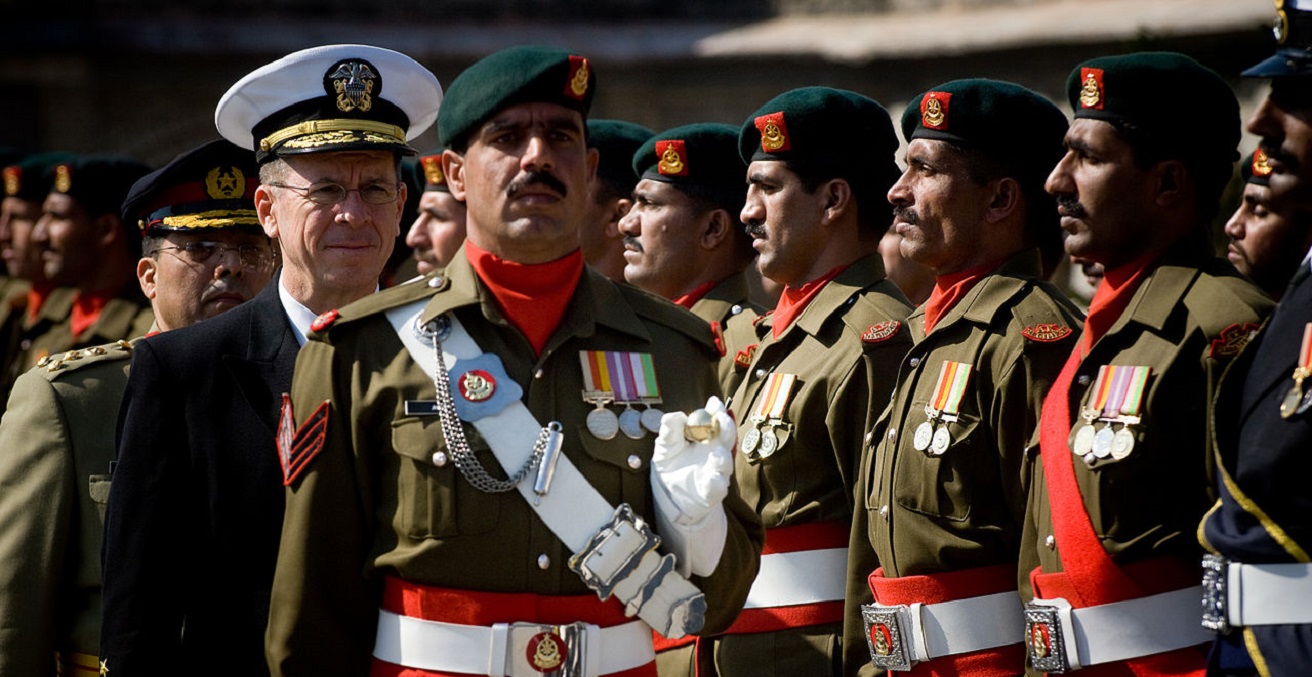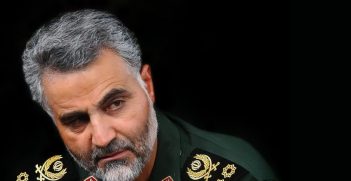Trump's Pakistan Challenge

For incoming US presidents, the alliance with Pakistan can seem to be a poisoned chalice. Does Trump’s 3am promise of “No More!” mean real change for this high-stakes troubled relationship?
As Donald Trump entered into his second year of presidency last week, South Asian geopolitics has emerged as a major challenge for the administration. Tensions were triggered most recently by a 3 am tweet by Trump reprimanding Pakistan over its non-compliance in purging the Haqqani network. Together with the subsequent decision to suspend USD$200 million (AUD$250 million) of aid to Pakistan, this symbolises the enduring complexities of harmonising divergent strategic interests. Earlier, outlining his South Asia policy, Trump had also warned, “We can no longer be silent about Pakistan’s safe havens for terrorist organisations, the Taliban, and other groups that pose a threat to the region and beyond”.
The US-Pakistan tension cannot be viewed in isolation. India’s deepening presence in Afghanistan and increased pressure along the Line of Control, Trump’s recognition of Jerusalem as Israel’s capital, and Benjamin Netanyahu’s six-day state visit to New Delhi to discuss defence cooperation, counter-terrorism and state-sponsored terrorism have all played a role. As much New Delhi would like to dehyphenate the United States’ India-Pakistan policy, the India-Pakistan conflict does influence US policies on South Asia, as much US-India cooperation impacts the US-Pakistan relationship. Therefore, the nosediving US-Pakistan alliance has a larger context. Historically, the US-Pakistan relationship has functioned as a transactional or fair-weather cooperation over Afghanistan, but this is now a source of conflict.
US-Pakistan relations oscillate between two extremes: very high or very low. Pakistan was slapped with US sanctions over its nuclear program. The sanctions were then lifted to secure its cooperation against the Soviets in Afghanistan the 1980s. Ties turned cold soon after the Soviets withdrawal in 1989, giving Pakistan the opportunity to help the Taliban gain power in 1996. In the post-9/11 period the US again embraced Pakistan to fight the Taliban, which was harbouring Osama bin Laden. Military and economic assistance resumed, but as this transactional engagement gathered steam, cooperation and mutual trust remained fragile.
The military-jihadi industrial complex in Pakistan proved inimical to US interests in Afghanistan. To buy the military’s compliance, the US granted major non-NATO ally status to Pakistan, with a generous USD$30 billion assistance program, which began in 2001. This aid and appeasement strategy bolstered the Pakistani military’s self-belief as an indispensable ally, and also undermined the democratic forces in Pakistan.
Since the 1990s, successive US administrations have struggled to control Pakistan’s behaviour. George W. Bush remained constantly troubled with intelligence leaks allegedly by those in the military and intelligence services loyal to the jihadis. The leaks rendered US air and drone strikes ineffective. An agitated Bush once even confronted the visiting former Prime Minister Yusuf Reza Gilani over the perceived “double game”. As a frustrated US resorted to unilateral air strikes, it further bludgeoned bilateral trust, as 24 Pakistani soldiers died in a misguided attack. A fuming Pakistan National Assembly condemned US high-handedness and suspended supplies from Pakistan to the US and NATO forces.
As anti-Americanism intensified, sending ties into a tailspin, CIA operatives swarmed Pakistan in the hunt for bin Laden. This led to another controversy involving Raymond Davis, who allegedly shot dead a Pakistani civilian in a case of mistaken identity. The Kerry-Lugar-Berman Bill passed by Barack Obama provided $US 7.5 billion assistance to buy its compliance but did little to smother tensions. A few years later, bin Laden’s discovery in Abbottabad, a few hundred meters from the Pakistan Military Academy, inflicted a crippling blow to mutual trust which hasn’t recovered since.
Trump is now realising the complexity of controlling Pakistan’s behaviour. General John Nicholson, head of US and NATO troops in Afghanistan, sees no visible change in Pakistani behaviour and the former Chairman of the Joint Chiefs of Staff, Admiral Mike Mullen had underlined the Inter-Services Intelligences’ control of the Haqqani network and the release of the Boyle-Coleman family from Haqqani captivity after five years as a case in point.
For Pakistan, the compliance road is laden with thorns. Anti-Americanism and political opposition inflamed by civilian deaths in US drone strikes and growing US-India cooperation on the one hand, and strategic utility of the military-jihadi industrial complex on the other, leave little space for policy manoeuvring. The United States’ deepening ties with India and the latter’s growing strategic partnership with Afghanistan have convinced the civilian and military stakeholders to alter the troika—Allah, Army and America—by incorporating China as an ‘all-weather’ alternative to America. Former Prime Minister Nawaz Sharif described the Sino-Pakistan relationship as “sweeter than honey” and opposed Taiwan and Tibet as a part of the one-China policy. Immediately following the US-India nuclear deal, President Pervez Musharraf rushed to Beijing to secure similar assurances and Xi Jinping has hosted Pakistani chiefs of staff several times over.
Since Pakistan ceded 5,180 square kilometres of the disputed Kashmir territory to China in 1963, bilateral ties have grown, with India emerging as a common factor in the Sino-Pakistan strategic cooperation. Beijing also does not carry compliance baggage and is at peace with Pakistan-based jihadis. With over USD$46 billion resting on the China Pakistan Economic Corridor (CPEC), China too has no intentions of undermining the military-Jihadi industrial complex, and has supported Pakistan in the UN by blocking the censuring of Islamist leaders Maulana Masood Azhar and Syed Salahuddin, by India, the US, Britain and France.
But Pakistan remains a divided over its dealing with the US. The Pakistani Defence Minister Khurram Dastagir Khan remarked in the National Assembly, “It’s time for a courteous yet ruthlessly candid dialogue between Pakistan and the US with everything on the table”. He alleged Pakistan was being made a scapegoat for American failures in Afghanistan and was wrongly being accused of playing a “double-game”. He said the US overlooked the sacrifices it had made. But Shireen Mazari of the Pakistan Tehreek e-Insaaf (an old ally of the Islamists and bitter US critic) found the statement “confusing” and called for adopting a “non-aggressive” approach towards the US. The Pakistan People’s Party called for a “stable and responsible” approach in dealing with the US. Other parties instead are concerned with how “institutions” (in a veiled attack on the military) are undermining democracy, pushing Pakistan into a war.
With regard to the economic corridor with China, problems have begun to surface. Pakistan, Nepal and Myanmar have cancelled three major hydroelectric projects as a part of the Belt and Road Initiative over tough financing terms dictated by Chinese companies, giving credence to the long-held scepticism about how China’s “cheque-book diplomacy” could turn partners into debt-ridden vassal states. Pakistan perhaps understands that the USD$200 billion US-China relationship has its own independent dynamics, and it must leave scope for future rapprochement with the US.
The Trump administration must be mindful that another information-sharing and action-based understanding with Pakistan hoping “they [the Pakistani military] will act if the US provided information’” negates the lessons of history. First, it must resolve the realism-idealism conundrum and choose whom to back: civilians or the military. Backing the latter for 40 years has only fed the military’s inflated self-belief as an indispensable ally and exacerbated its ‘double-game’. Strengthening the supremacy of the parliament and civilian authorities in Pakistan using the diplomatic and economic tools must be explored diligently. Whether the US executive and legislature can alter policy priorities to this effect remains Trump’s biggest challenge yet. For now, swapping 3 am tweets with a more structured and nuanced policy formulation would be a good start!
Dr Ashutosh Misra is one of Australia’s leading Asianists and has published extensively including, ‘Pakistan’s Stability Paradox: Domestic, Regional and International Concerns’ (Routledge, 2012). He appears regularly in Australian and international media discussing South Asian affairs.
This article is published under a Creative Commons Licence and may be republished with attribution.





